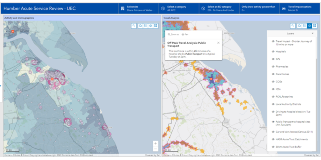
We co-developed a modelling tool for long waits with Somerset ICS to clarify the activity levels they needed to achieve their 78-week wait ambitions. The model helped the performance lead and team to identify areas of risk and challenge where additional capacity was needed.
Objective

What we did
We developed a model to forecast the number of 78-week waiters still waiting by March 2023.
This was co-developed with Somerset ICS through an iterative process centred on continual testing and refining with providers and commissioners to build accuracy and trust in the model.
Data sources used included published national Referral to Treatment reporting and National Waiting List Minimum Datasets to calculate non-admitted to admitted shift percentages.
This national data, provided in a pre-populated Excel tool, gave a starting point for forecasting. Key assumptions in the model could then be adjusted to accurately reflect their local situation to further refine outputs.
Activity
Elective care
Analytics and business intelligence
Data driven decision making
Outcome
- The model enabled validation of provider positions and highlighted areas of risk and challenge on which to focus (e.g., capacity gaps, clock stop profiles for specialties either currently or in future). It also identifies “problem months” where additional clinic capacity is needed. A review of outputs following a recent refresh shows a high level of consistency with operational understanding of challenged specialties.
- Using national datasets avoids additional data collection and information governance (IG) compliance processes and as the production process is already well automated it means that the model can be rapidly deployed in multiple ICS/providers. Systems are able to learn from each other and together, using this adaptable tool that has the potential to scale rapidly across an entire region or to cover different wait time cohorts (e.g. 65 week+) in line with annual operating priorities.






